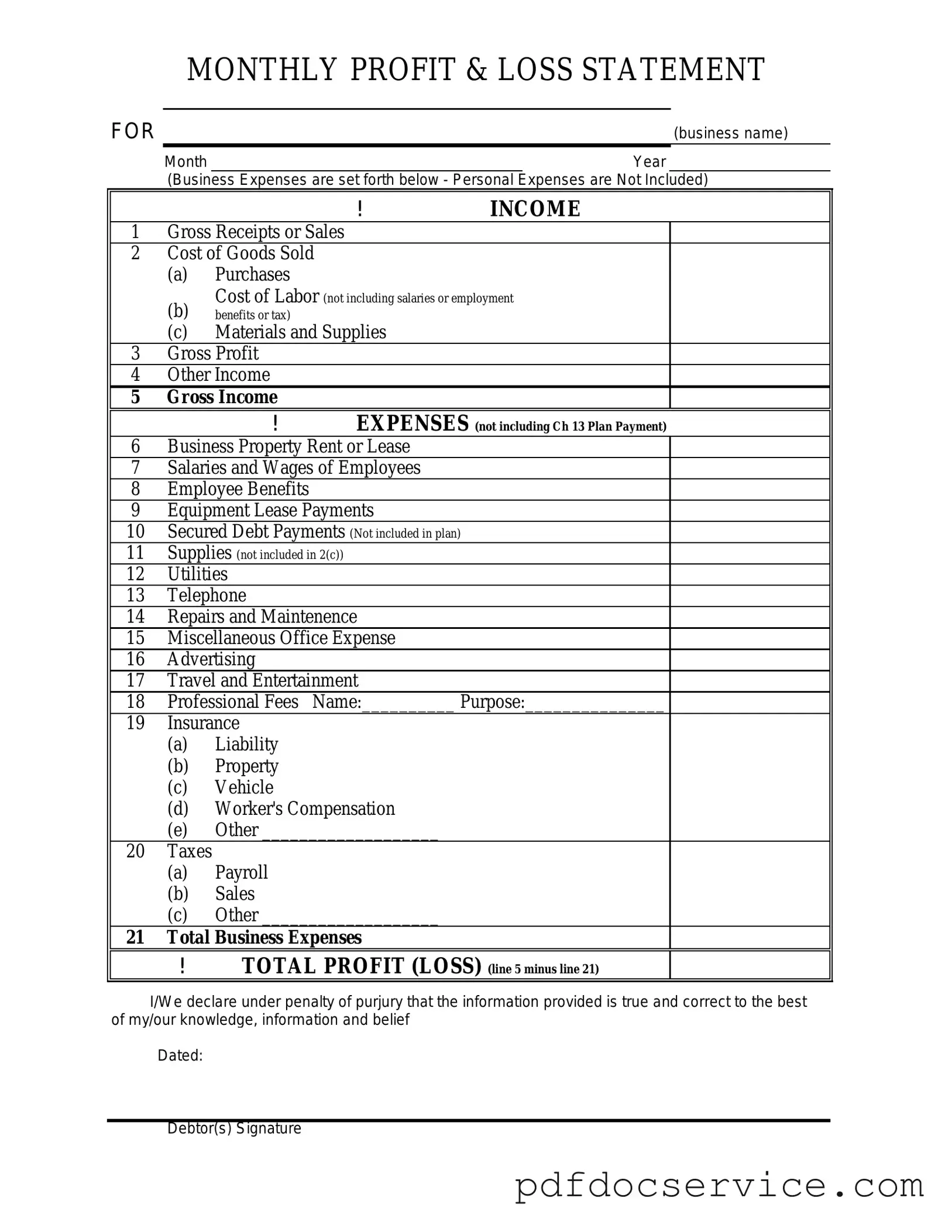The Profit and Loss form, often referred to as the P&L statement, plays a critical role in understanding a business's financial performance over a specific period. This document summarizes revenues, costs, and expenses, providing a clear picture of whether the business is operating at a profit or a loss. Key components of the form include total revenue, which reflects all income generated from sales, and cost of goods sold, which indicates the direct costs associated with producing those goods. Operating expenses, such as rent, utilities, and salaries, are also detailed, showcasing the ongoing costs of running the business. Additionally, the form may include non-operating income and expenses, allowing for a comprehensive view of all financial activities. Ultimately, the Profit and Loss form serves as an essential tool for business owners, investors, and stakeholders to assess profitability and make informed decisions regarding future operations and investments.
